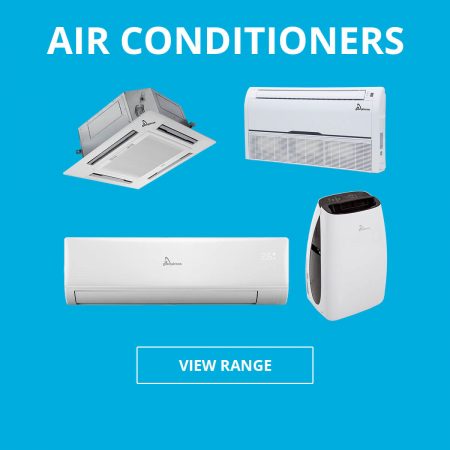Also referred to as evaporative coolers or swamp coolers, portable evaporative air conditioners manage to provide some comfort during blazing hot temps by harnessing the power of evaporation. The science behind it is pretty simple. Remember the cooling sensation you get when you put a moist cloth on your forehead when you have a high fever? This happens because the temperature of your head drops as the water from the cloth evaporates. Now instead of a cloth, imagine you have a piece of equipment that does this to the hot air that surrounds you.
You see, when water evaporates, it changes from liquid to gas form, with the particles bearing the highest energy being the first ones that leave the water. This process results in a reduction of the air temperature. Try misting the air around you on a hot summer day and you will immediately notice some difference in how much cooler the air feels. Now magnify that by a few hundred times and add technology to the process to get an idea of how effective and efficiently a portable evaporative air conditioner works.
How Evaporative Coolers Work – Step by Step
So how do portable evaporative air conditioners work? In general, a portable evaporative air conditioner consists of a water reservoir, a thick cooler pad (or multiple pads), a fan, and some additional controls that help fine-tune the results. The fan has a double role (1) to draw the hot, dry air into the machine and across the pads, and (2) spread the resulting cooler air around the room.
Here is how it all works:
- The cooling pad(s) absorbs water from the water reservoir.
- The fan draws warm, dry air across the pad(s).
- The water on the cooling pad(s) evaporates quickly.
- The air becomes chillier (often by as much as 20 degrees).
- The fan releases that cold air back into the atmosphere.
Note: Some portable evaporative air conditioners feature additional parts for enhanced functions, such as air filters, to help minimize mildew growth and reduce allergens to improve air quality. Others come with an extra ice pack to further cool the air.
Important Considerations About Portable Evaporative Air Conditioners
Evaporative coolers are more sustainable and energy-efficient than traditional air conditioners. In fact, they may use up to 7x fewer watts of electricity (traditional AC units need a compressor to deliver the intended cooling effect, which requires a lot of electricity). This means that evaporative coolers also lower your carbon footprint — and your utility bills. For one to be effective, however, you need to live in a dry climate with low relative humidity. This is because portable evaporative AC models add moisture into the air. The released water particles need to occupy “space” in the air they are released to. In humid air, there is not enough room for them to float off easily as the air is already saturated with water. This is not the case with dry air and arid locations.
Also, bear in mind the following:
- Evaporative ACs need a steady stream of fresh air. For this reason, open the windows closer to the fan to allow quicker evaporation. This will also prevent your home from feeling too clammy.
- Ensure you empty and clean the water reservoir often to avoid mildew and mold growth. Plus, you prolong the life of your evaporative cooler while also maintaining clean air quality.
- Choose the right size for your square footage.
- Although it may sound counterintuitive, avoid adding ice to the water reservoir to achieve a more intense cooling effect, unless your AC unit features an ice pack. You will get the opposite result.
Need a welcome accessory to an outdoor gathering, pool party, or picnic during scorching hot days? Or a portable AC unit to use in any room inside the house to lower the temperature? Then starting to experiment with a portable evaporative air conditioner is definitely a step in the right direction!
